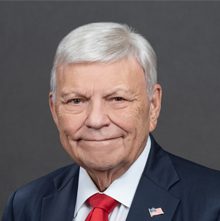Purchasing Manager’s Index in Contraction Territory
The U.S. economy is slowing at a pace not seen since the 2008 financial crisis.

The end of the third quarter is rapidly approaching, with oil pricing, although softening, continuing to inflict pain at the pump and throughout the entire supply chain. As of this writing, WTI is at $88.62/barrel (Bbl.) and Brent at $93.28/Bbl., fluctuating daily. Diesel fuel remains high; as of this writing, the national average is $5.74/gallon.
The U.S. economy is slowing at a pace not seen since the 2008 financial crisis per S&P Global Market Intelligence’s Chief Economist Chris Williamson, referring to the latest round of Purchasing Manager’s Index (PMI) readings.
The U.S. PMI Composite Output Index fell into contraction territory at 47.5 in July from 52.3 in the prior month. Services PMI fell short of the market estimate with a reading of 47, down from 52.7 — the largest decline since May 2020. Causes are decreases in new exports, a drop in job creation, escalating prices and business confidence being at its lowest level since September 2020.
The manufacturing PMI dropped to a two-year low of 52.3 in July, from 52.7 in June. Note that anything above 50 indicates expansion; the market prognostication is 52.
August production levels were flat, new orders fell, employment growth moderated and business sentiment fell to its lowest level since October 2020. More firms reported that they plan to reduce personnel and slash costs.
The Atlanta Fed’s GDP for the second-quarter GDP declined by -0.9 percent, signaling what is widely held as the technical recession indicator (two consecutive quarters of negative GDP).
Inflation is still the driving force behind the Federal Reserve’s rate policy. The Consumer Price Index rose to 9.1 percent from the previous year and 1.3 percent from May to June. We have seen the Federal Reserve initiate a baseline 0.75-percent increase in July; it is open to additional rate increases to reduce the rate of inflation and curb demand.
And another reminder that oil country tubular goods (OCTG) pipe mills are reporting that piping is expected to increase by the amount of the punitive duties (that could be up 69 percent) to be imposed by the International Trade Commission (ITC) and U.S. Department of Commerce (DOC). The issuance of the final ruling from the ITC and the DOC regarding the anti-dumping and countervailing duty petition on OCTG from Argentina, Mexico, The Republic of Korea and Russia is expected this month or early October.
With these developments in mind, it is critical to maintain close relations with your manufacturers/suppliers to avoid being unprepared for price fluctuations and shipping delays (especially true for those relying on offshore producers). A major manufacturer announced in August a price reduction on selected carbon steel butt-welding fittings designed to keep its distributors competitive in this volatile marketplace.
Building Large in Arizona
Arizona is the home of some of the largest industrial projects under construction in the United States. There is more than $40 billion of project spending underway, per Industrial Information Resources.
Intel Corp. and Taiwan Semiconductor Mfg. Co. have substantial investments underway in Arizona. Intel (Chandler, Ariz.) is expanding its campus by constructing two new manufacturing facilities with a total investment value (TIV) of $20 billion. This expands the site to include six manufacturing facilities. Completion is scheduled for 2024. This represents the largest private investment in Arizona’s history.
In Phoenix, Taiwan Semiconductor is doubling its global capacity over a three-year period with the construction of a grassroots manufacturing facility. The project includes the construction of a multibuilding campus totaling 3.8 million square feet. This includes a four-story, 2.3-million-square-foot fabrication building with an initial production capacity of 20,000 wafers per month.
The facility requires vast amounts of water. About 90 percent of the water will be recycled, thus requiring a substantial piping system.
Supporting Arizona semiconductor manufacturing is LCY Group’s isopropyl alcohol recycling plant project in Phoenix, which is dedicated specifically to the manufacturers of electronics and semiconductors. The plant will be able to take metal-contaminated isopropyl alcohol, clean and purify it for return to chip-making facilities for use in the manufacturing process. Completion is scheduled for 2024.
In addition to the semiconductor industry, data centers are playing a key role in Arizona’s project activity, with approximately $3 billion in projects underway. The most prominent is Microsoft’s data center campus in Goodyear, Ariz. The project includes the construction of new buildings and the expansion of existing ones.
LNG Project Spending
In the oil and gas sector, liquified natural gas (LNG) leads in project spending. Total U.S./Canada capital expenditure projects in the construction stage are $27.4 billion, with $24.4 billion in liquid gas pipeline projects and 30 trains, 2021-2023. The volume of new LNG capex being developed in the United States equals $202.6 billion (TIV), 145 trains with 309.2 million tonnes per annum (MTPA).
Our current LNG liquefaction fleet is 94.5 MTPA. The perfect storm of price/demand crises is directly related to the COVID-19 recovery and the Russian/Ukraine conflict.
In addition, the Texas-based Freeport LNG shutdown due to an explosion is expected to be partially back on stream at limited capacity in October, with 100-percent restoration not expected until the end of this year. As the company operates one of the largest LNG liquefaction and export facilities in the world, this has exacerbated the supply/demand crises.
The United States has 388 active LNG projects with a TIV of $134 billion in terminal capex. Overall development will be constrained due to pipeline capacity and federal, state and local regulation.
Gas pricing will remain high, near or at the $9 range until we can increase supply. With the Freeport facility coming on stream at capacity, pricing may soften. Government still is a constraint to increasing pipeline capacity.
Development on the East Coast will be difficult due to regulatory increases. LNG permits generally take two to three years to meet regulatory requirements. There are 100 small-scale LNG projects that are currently in play.
The Biden administration has proposed a five-year offshore oil and gas leasing program allowing for up to 10 lease sales in the Gulf of Mexico and one in Alaska’s Cook Inlet, with an option of allowing no sales.
“I am disappointed to see the zero-lease option on the table,” says Sen. Joe Manchin, stressing the importance of leasing programs to the U.S. energy, security and the needs of our allies.
Rep. Paul Grijalva, chairman of the House Natural Resources Committee, expresses a different opinion, saying new offshore lease sales over the next five years “will do nothing to help lower prices at the pump, and will make our emissions goals virtually impossible to achieve.”
PVF Roundtable News
The fourth 2022 PVF Roundtable Networking Meeting will be a dinner event sponsored by The Weldbend Corp. The keynote speaker, Robert Bryce, will be addressing industry issues regarding energy production. Bryce is an Austin, Texas-based author, journalist, film producer and public speaker.
Weldbend looks forward to seeing and meeting you at the event that will be held Oct. 11, beginning at 4:30 p.m. CDT at Houston’s Marriott Houston Westchase, 2900 Briarpark Dr., 713-978-7400.
The PVF Roundtable TroutBlast Fishing Tournament is scheduled for Oct. 7-8 in Matagorda, Texas, beginning with The Captain’s Dinner on the 7th at Storm Shack (County Road 259), 5-9 p.m.
The fishing tournament begins at 6 a.m. on the 8th at Blackjack Tournament, Matagorda Harbor.
The golf tournament and the TroutBlast are the two major fund-raising events held by the PVF Roundtable Charitable Foundation, with the funds raised dedicated to the PVF Roundtable Scholarship Programs. To date, $1.4 million in scholarships have been distributed to universities and trade schools for the development of a skilled labor force for the PVF industry.
As a member of the board of directors, and I speak for all members, we thank you for your participation in these events.
With the uncertainties in the current turbulent PVF market, these meetings are a unique venue for you and your associates to network with your industry peers. These events provide the platform to share information, discuss pertinent issues, meet new contacts, develop new, long-lasting friendships and pursue new opportunities in the industry.





